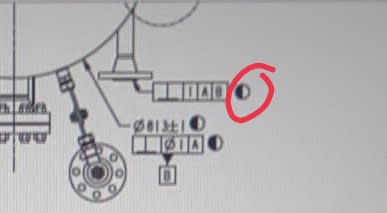nik007
Mechanical
- Jul 25, 2023
- 2
Can someone please clarify the significance of the half filled circle symbol. In the attached image, these symbols are attached to dimensions and also to some gd&t symbols.


Follow along with the video below to see how to install our site as a web app on your home screen.
Note: This feature may not be available in some browsers.
cowski said:The part must be machined under the light of a 1/2 moon to the proper size as indicated by the runes.
![[ponder] [ponder] [ponder]](/data/assets/smilies/ponder.gif)
